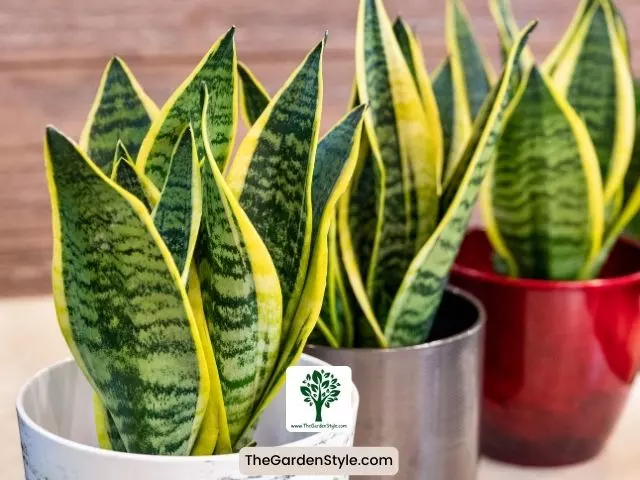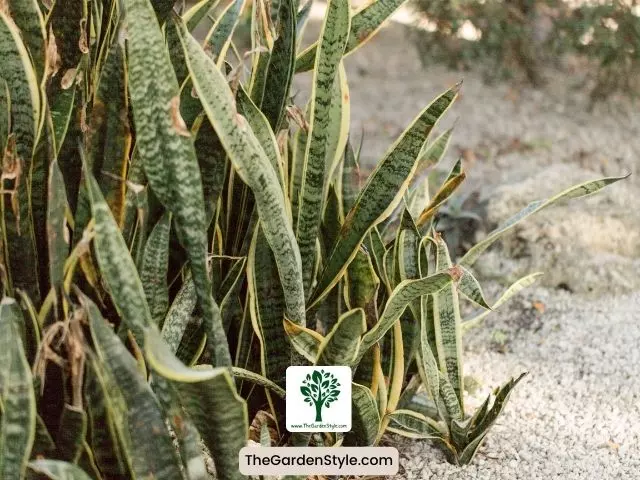In this post, I provide a comprehensive guide on how to care for Sansevieria laurentii. I cover topics such as lighting, watering, soil requirements, and propagation. I have found that Sansevieria laurentii is a popular choice due to its striking appearance and low maintenance needs. Commonly known as the “snake plant” or “mother-in-law’s tongue,” this plant is native to West Africa and has become a popular indoor plant worldwide.
Sansevieria laurentii is a member of the Asparagaceae family and is characterized by its long, upright leaves that grow from a central rosette. The leaves are dark green with yellow margins, which adds to its unique appearance. This plant is also known for its air-purifying properties, making it a great addition to any home or office space.
Table of Contents
Sansevieria laurentii Care Guide
In the following paragraphs, I’ll delve into comprehensive guidance on Sansevieria laurentii care. From optimal lighting and watering needs to soil requirements and propagation methods, explore a detailed breakdown for nurturing this striking plant.
How big does a Sansevieria laurentii grow? Sansevieria laurentii can grow up to 2-4 feet (60-120 cm) in height, making it an excellent choice for adding vertical interest to your indoor garden. It is also toxic to pets and humans if ingested, so keep it out of reach of children and pets.

Light Requirements
Sansevieria laurentii prefers bright, indirect light. While Sansevieria laurentii can survive in low-light environments, its growth may be limited without adequate brightness. For the best appearance and vitality, provide this snake plant with bright, indirect light. It would be best if you avoid placing the plant in direct sunlight, as intense rays can damage the leaves over time.
Watering Needs
Sansevieria laurentii is a drought-tolerant plant and can go for long periods without water. Water only when the soil is completely dry, and avoid overwatering as it can lead to root rot. During winter, reduce watering frequency to prevent waterlogging. Learn more about snake plant leaves turning yellow.
Temperature & Humidity
Sansevieria laurentii can tolerate a wide range of temperatures, from 60°F to 85°F (15°C to 29°C). Place the plant in an area shielded from chilly drafts and the direct airflow of air conditioning vents. It can also thrive in low-humidity conditions.
Soil Mix
Sansevieria laurentii prefers well-draining soil. A mixture of cactus soil and perlite or sand can provide the proper drainage. Avoid using heavy soil that retains water. Learn more about the best soil for a snake plant.
Fertilizer
Sansevieria laurentii does not require frequent fertilization. For a correct care of Sansevieria laurentii feed it with a balanced, water-soluble fertilizer once every two months during the growing season (spring-summer).
- Give your snake plant every opportunity to grow strong with a little help from Farmer’s Secret.

How to Propagate Sansevieria laurentii
You can propagate Sansevieria laurentii through various methods. I have successfully propagated this plant through leaf cuttings and division. In the following paragraphs, I share my experience and tips with you.
Leaf Cuttings
Propagation through leaf cuttings is a simple and effective method. Select a healthy leaf and cut it into sections of about 3-4 inches in length. Make sure each section has a few inches of intact leaf and a healthy root system. Plant the cuttings in a well-draining potting mix and keep the soil moist but not waterlogged. Within a few weeks, you should see new growth emerging from the cuttings.
Steps for Leaf Cuttings Propagation
- Select a healthy leaf.
- Cut into sections of 3-4 inches.
- Make sure each section has a few inches of intact leaf and a healthy root system.
- Plant in a well-draining potting mix.
- Keep soil moist but not waterlogged.
It is also possible to propagate the snake plant in water easily. I recommend that you read our article on how to propagate a snake plant in water.
Division
The division is another easy way to propagate Sansevieria laurentii. This method involves separating the plant into smaller sections and replanting them in individual pots. To do this, gently remove the plant from its pot and loosen the soil around the roots. Divide the plant into sections, making sure each section has a healthy root system and a few leaves. Replant each section in a well-draining potting mix and water thoroughly.
Steps for Division Propagation
- Gently remove the plant from a pot.
- Loosen the soil around the roots.
- Divide the plant into sections.
- Make sure each section has healthy roots and a few leaves.
- Replant in a well-draining potting mix.
- Water thoroughly.
Propagation is a great way to expand your collection of Sansevieria laurentii. With these simple methods, you can easily propagate this plant and enjoy its beauty in multiple locations.

Pests and Diseases
Sansevieria laurentii is a hardy plant that is relatively low maintenance. However, like any plant, it can still be susceptible to pests and diseases. Here are some common issues to look out for:
Pests
Spider Mites: You can identify this tiny pest by their webbing and the yellow speckling they leave on leaves. To prevent spider mites, keep the air humid and avoid over-fertilizing. If they do appear, wipe the leaves with a damp cloth and use an insecticidal soap.
Mealybugs: Mealybugs look like tiny cotton balls and can be found on the leaves or in the soil. To get rid of them, wipe the leaves with a damp cloth and use an insecticidal soap. You may also need to repot the plant in fresh soil.
Scale Insects: Scale insects look like small bumps on the leaves or stems. To remove them, use a cotton swab dipped in rubbing alcohol to wipe them off. You may also need to use an insecticidal soap.
Diseases
Root Rot: Overwatering is often the cause of root rot. You can identify this problem by the appearance of yellowing and wilting of leaves. To prevent root rot, make sure the soil is well-draining and avoid overwatering. If root rot is already present, remove the affected leaves and repot the plant in fresh soil.
Leaf Spot: Fungal infections are often the cause of leaf spot disease. You can identify this problem by the brown spots on the leaves. To prevent leaf spot disease, avoid getting water on the leaves and make sure the plant has good air circulation. If a leaf spot is already present, remove the affected leaves and use a fungicide as directed.
It’s important to note that Sansevieria laurentii is toxic to pets and humans if ingested. Keep it out of reach of children and pets.


